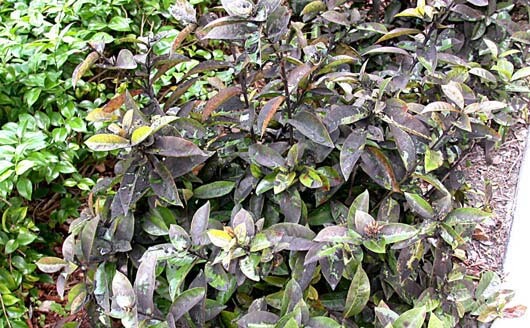Sooty Mold

Florida-Friendly Landscaping™ in a Minute
Episode Archive
Episode #121 | Original Air Date: August 17, 2020
Related Resources
- Sooty Mold in the Landscape: What Can it Mean?
- What is that black stuff on my plant leaves?
- Gardening Solutions: Integrated Pest Management (IPM)
Transcript
Plants can be bothered by a fungal disease called sooty mold.
Sooty mold appears as a black, velvety coating on the leaves of certain plants like camellias, hollies and citrus. Although it’s unattractive, sooty mold usually doesn’t damage plants.
The “mold” actually grows on the honeydew excreted by sucking insects like scale and aphids. When the honeydew falls on the leaves, it creates an ideal growth medium for sooty mold.
The best way to prevent sooty mold is to manage the problem insects. To tackle the insects, try blasting the plant with the hose or using insecticidal soap, since these options are effective but nontoxic to kids, pets, and other animals.
Florida-Friendly Landscaping™ in a Minute is a production of the University of Florida’s Florida-Friendly Landscaping™ Program, IFAS Extension, and WUFT-FM in cooperation with the Florida Department of Environmental Protection.

